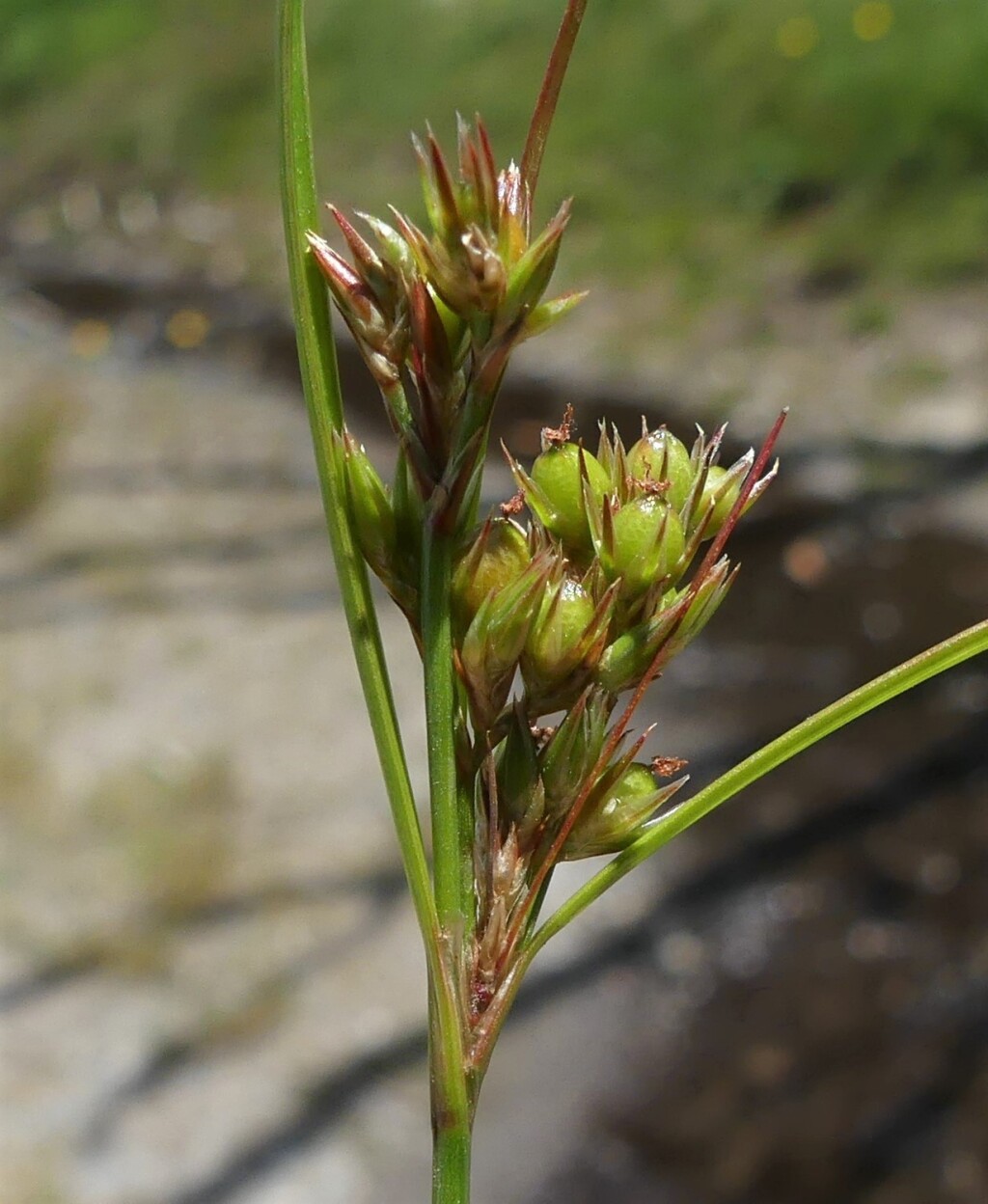Juncus tenuis
Willd. Slender RushTufted, shortly rhizomatous perennial. Culms erect, 10–60(–80)cm high, each with up to c. 5 leaves and 1–3 cataphylls towards the base. Leaf-blades solid, longer or shorter than culms and 0.5–2 mm wide, flat or shallowly channelled above, apex truncate and usually irregularly toothed, rarely acute; auricles obtuse, to c. 6 mm long in the upper leaves (shorter below). Inflorescence with flowers usually well spaced, occasionally congested (but not forming well-defined clusters); 1–several leaf-like bracts exceeding the inflorescence, often two more than 5 cm long; prophylls present. Tepals with broad green midrib when young, margins pale, membranous; outer tepals 3–5 mm long, acute to acuminate; inner shorter than or subequal to the outer; stamens 6, anthers 0.3–0.6 mm long. Capsules light brown at maturity, ovoid, c. 2.5–3.5 mm long, obtuse and shortly mucronate, shorter than or subequal to the tepals; seeds c. 0.3–0.5 mm long, slightly asymmetrical, with very fine longitudinal and transverse ridges discernible at high magnification, minutely apiculate at one or both ends. Flowers mostly Nov.–May, seeds shed mostly Jan.–Jul.
VVP, VRiv, GipP, OtP, CVU, NIS, EGL, EGU, HSF, HNF, OtR, Strz, VAlp. Also naturalised in NSW, Tas. Native to temperate North America. Occurs in disturbed lowland sites (e.g. moist paddocks), but is more common at higher altitudes within disturbed moist areas in wet sclerophyll forests and subalpine woodlands.
Albrecht, D.E. (1994). Juncus. In: Walsh, N.G.; Entwisle, T.J., Flora of Victoria Vol. 2, Ferns and Allied Plants, Conifers and Monocotyledons, pp. 197–233. Inkata Press, Melbourne.
 Spinning
Spinning

